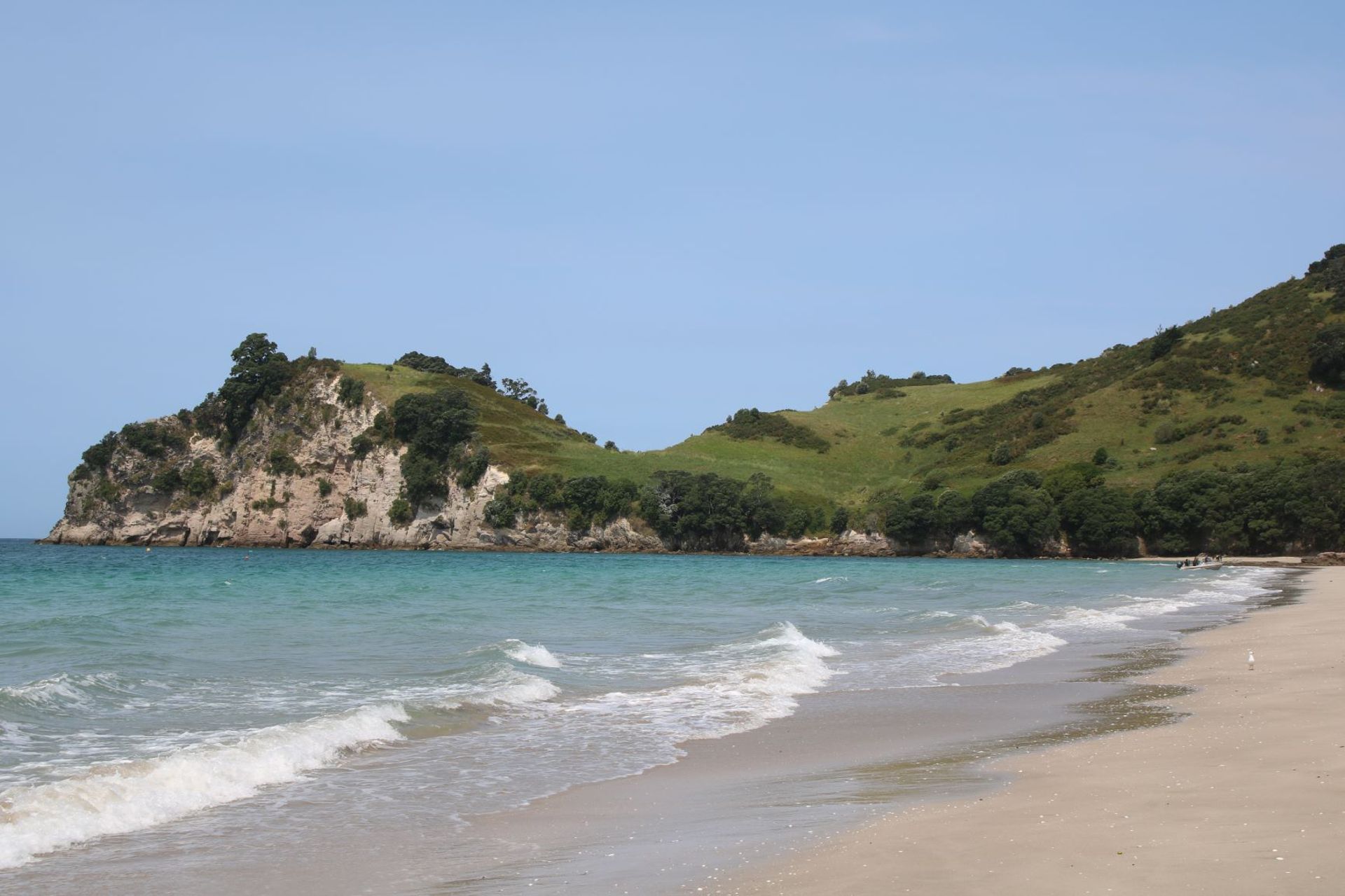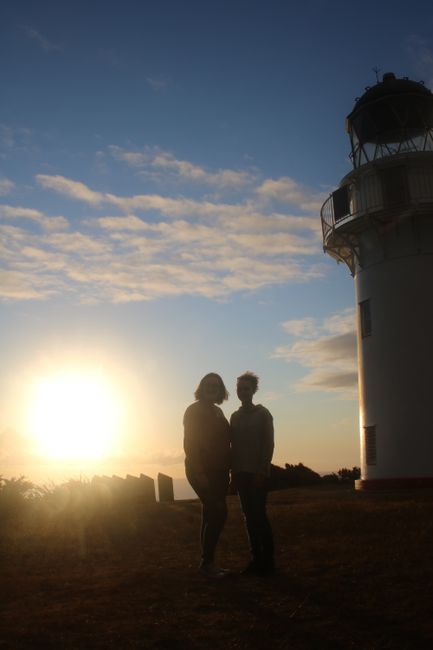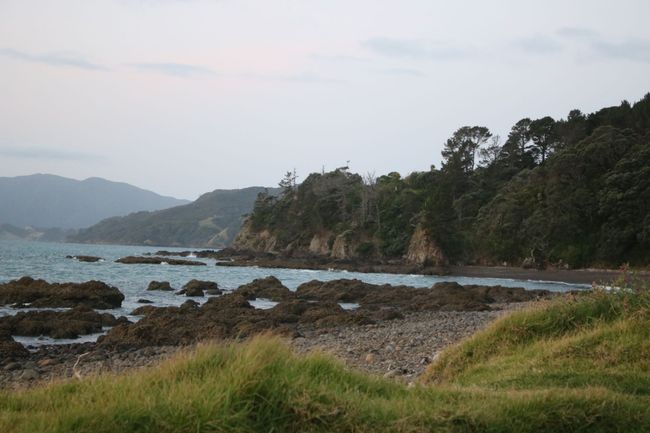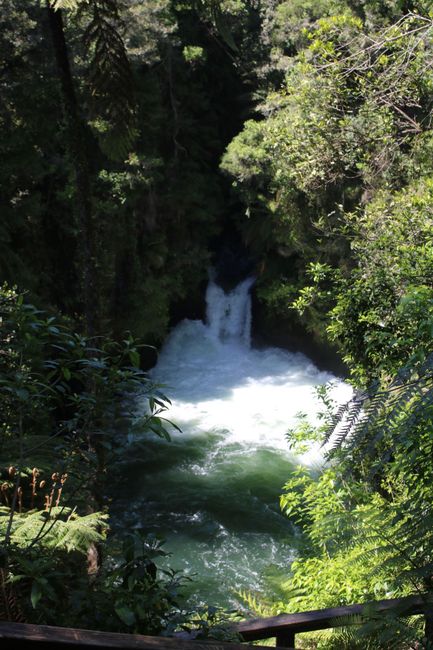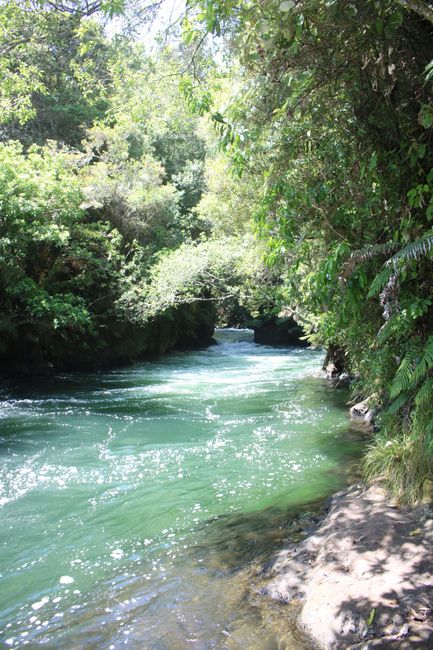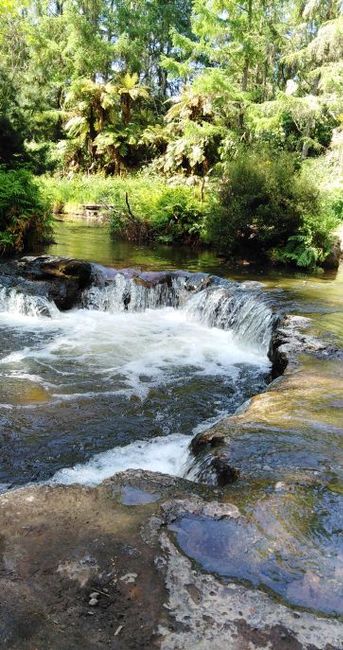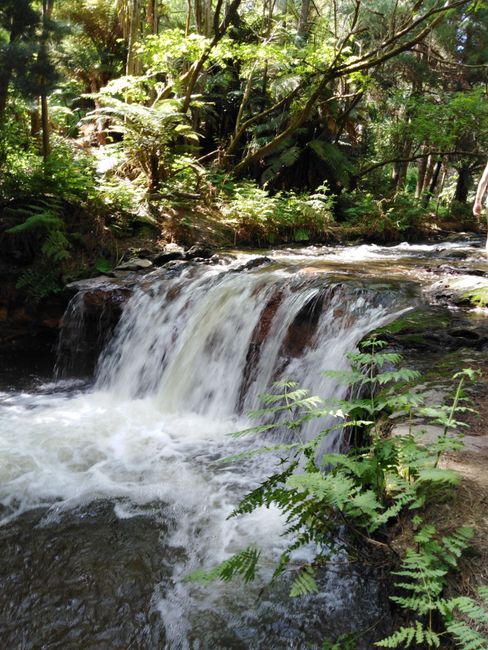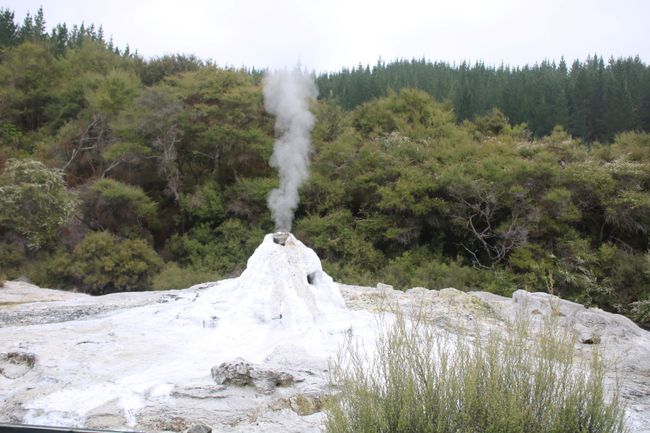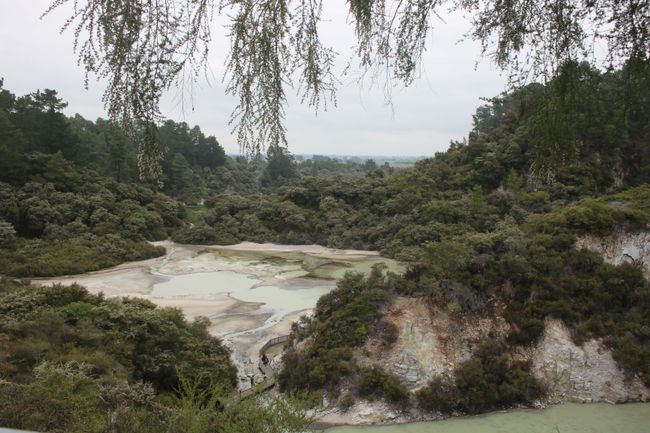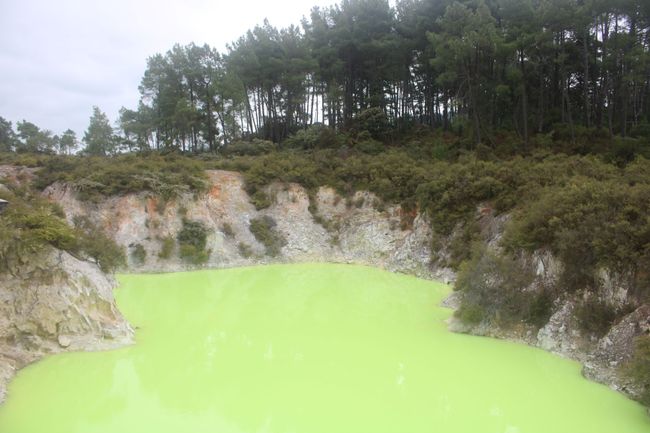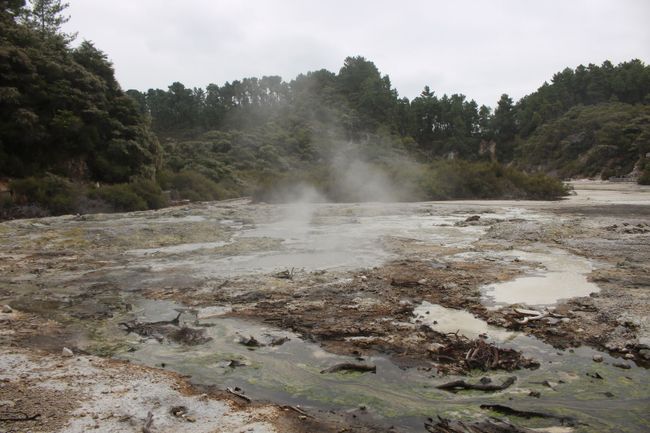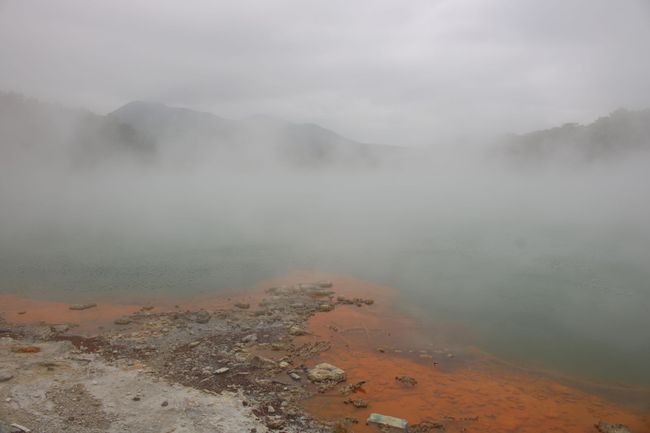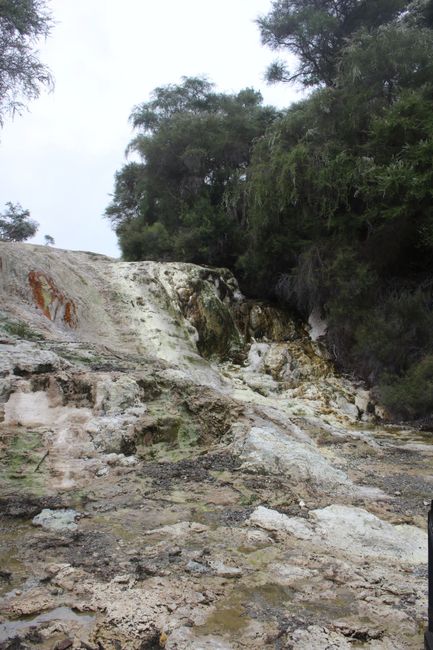- Chapter 05
Publisearre: 28.11.2019
Ynskriuwe foar Nijsbrief
Our route took us further south since the last entry.
After a stopover in Ngatea, we continued to Rotorua. Nearby, we first visited Okere Falls. There is a circular path that takes about an hour. On this path, there are different lookout points where you can admire the Tutea Falls, among others. The river that flows through these waterfalls is a popular rafting route.
Then we went on to 'Kerosene Creek'. We left all valuables locked up at the campsite and set off. When we arrived there, we walked a short distance to the waterfall, with an adjacent swimming area. To our surprise, the water was not only warm, but downright hot. To be exact, 37°C. Despite the slightly unpleasant smell, we joined the handful of other bathers. Unfortunately, we couldn't stand under the small waterfall because we could hardly breathe due to the stirred up, hot water mist there.
The next day we decided to visit Wai-O-Tapu. We got up early so as not to miss the 'Lady Knox' geyser. When we arrived, we were definitely not the only ones with this idea. The best seats were already taken. With a bit of luck, we still managed to find a clever spot where we had a clear view, as there was a stroller in the next row.
To trigger the geyser, the organizers put soap in the opening. The result: a water fountain about 12m high. However, the spectacle was over after barely a minute and we went into the official park.
In this park, there are 23 attractions that can be visited on three different tours. The information about the respective hotspots was particularly interesting.
Wai-O-Tapu is an 18km² geothermal area. One of the most popular spots is the Champagne Pool. It is New Zealand's largest thermal spring with a diameter of 65m. The surface temperature is 74°C. It got its name because of the carbon dioxide that rises to the surface. There, it causes a gentle bubbling, spread over the entire lake.
The most striking attraction was the bright green Roto Karikitea at the end of the tour. Its color is created by mineral deposits. These ensure that sunlight is refracted accordingly. It is extremely acidic, as evidenced by its pH value of two.
Ynskriuwe foar Nijsbrief
Antwurd
